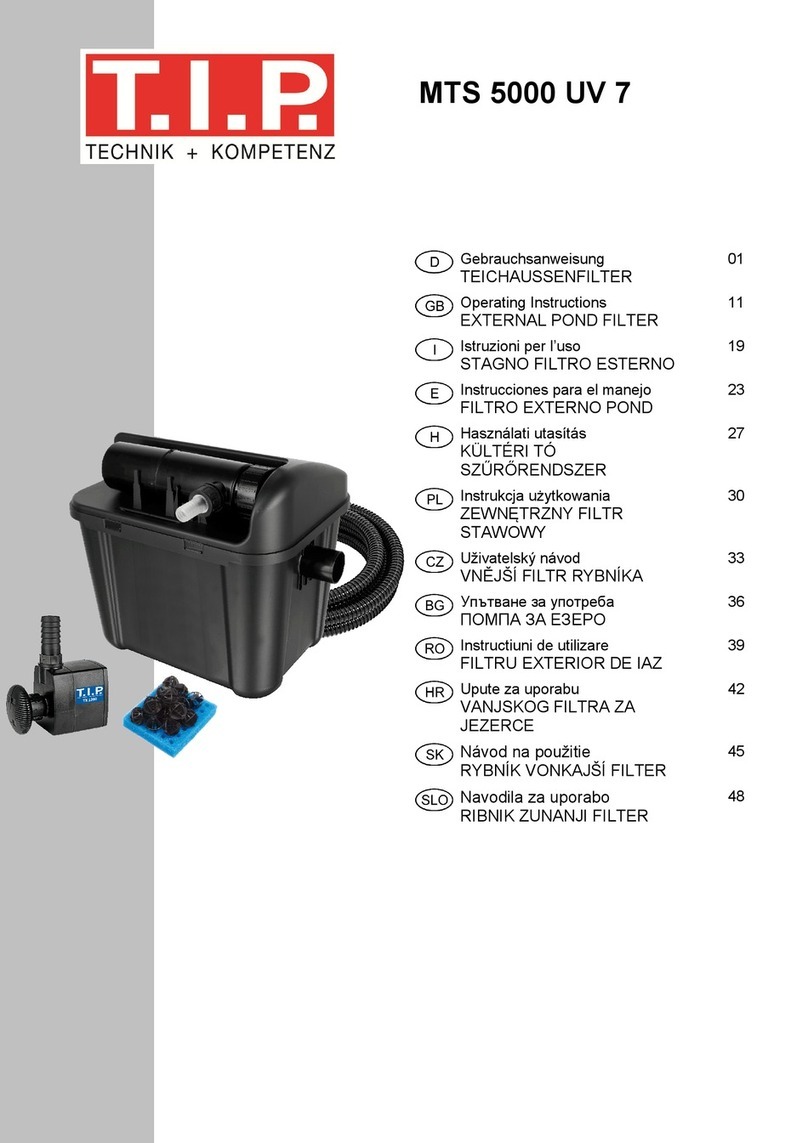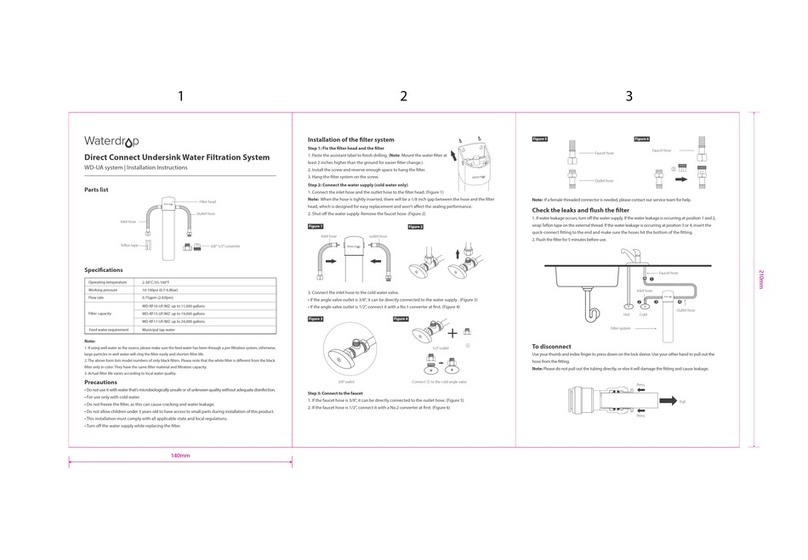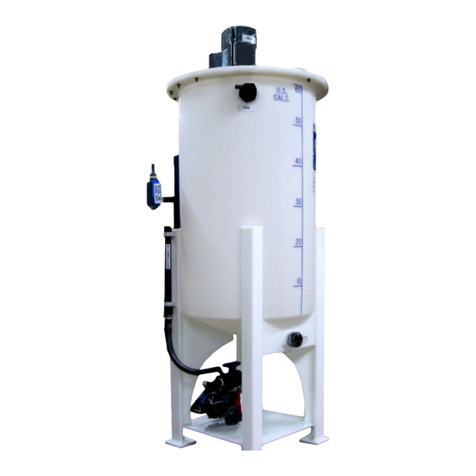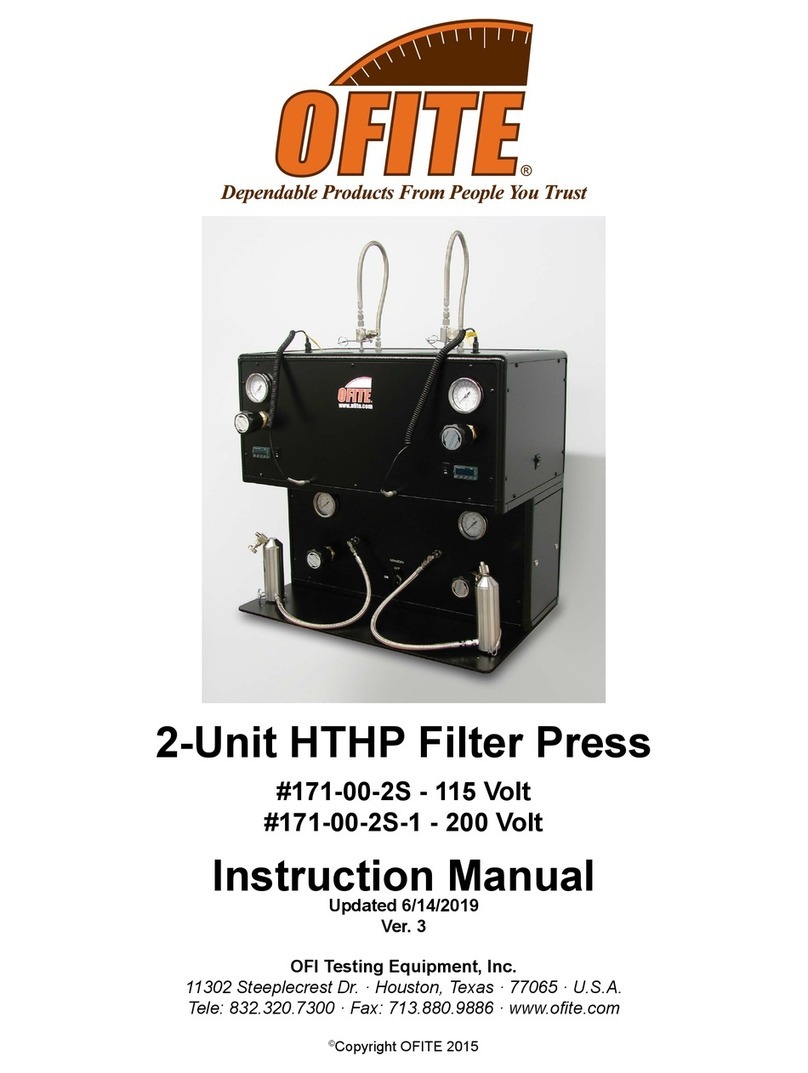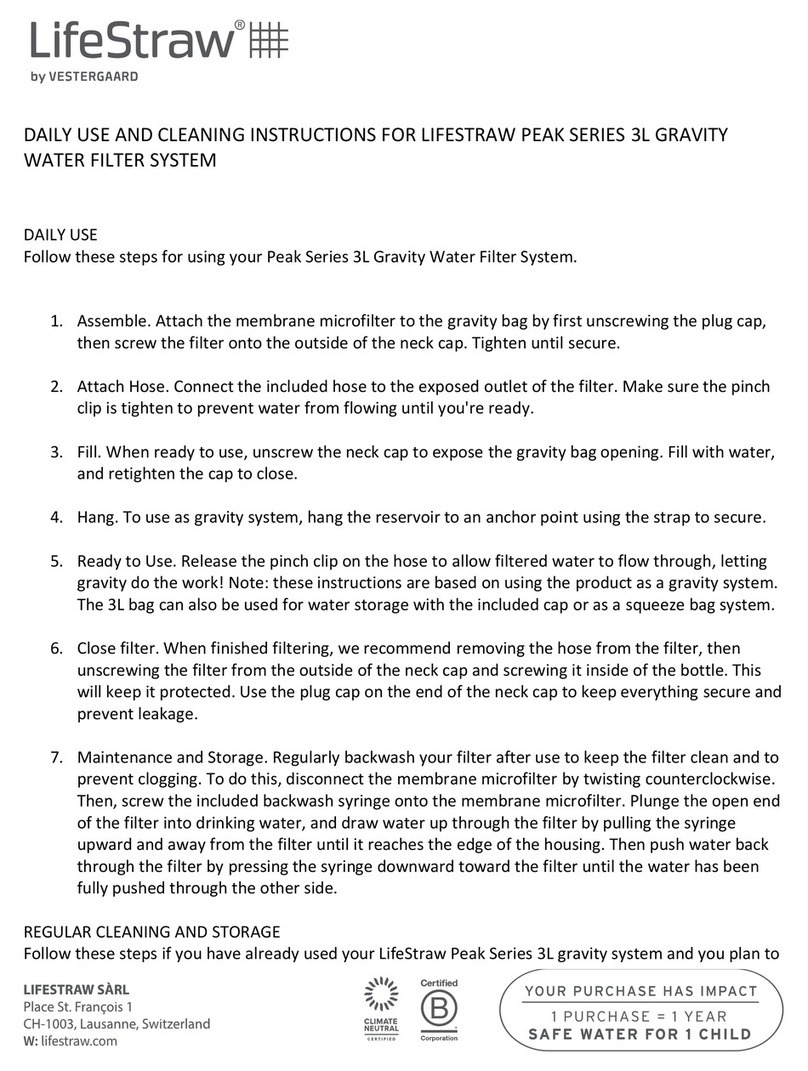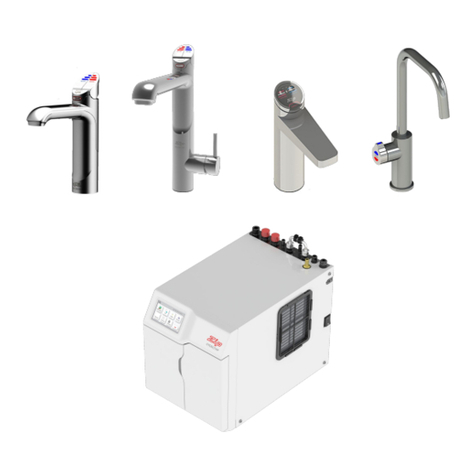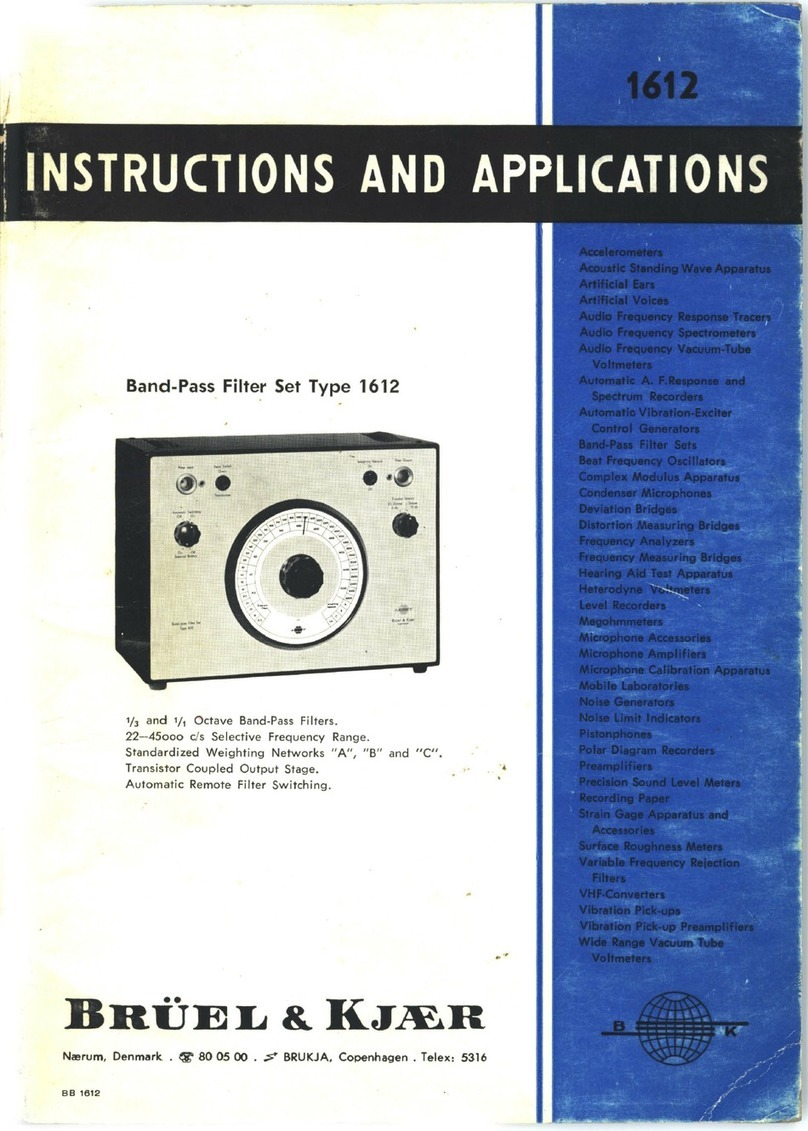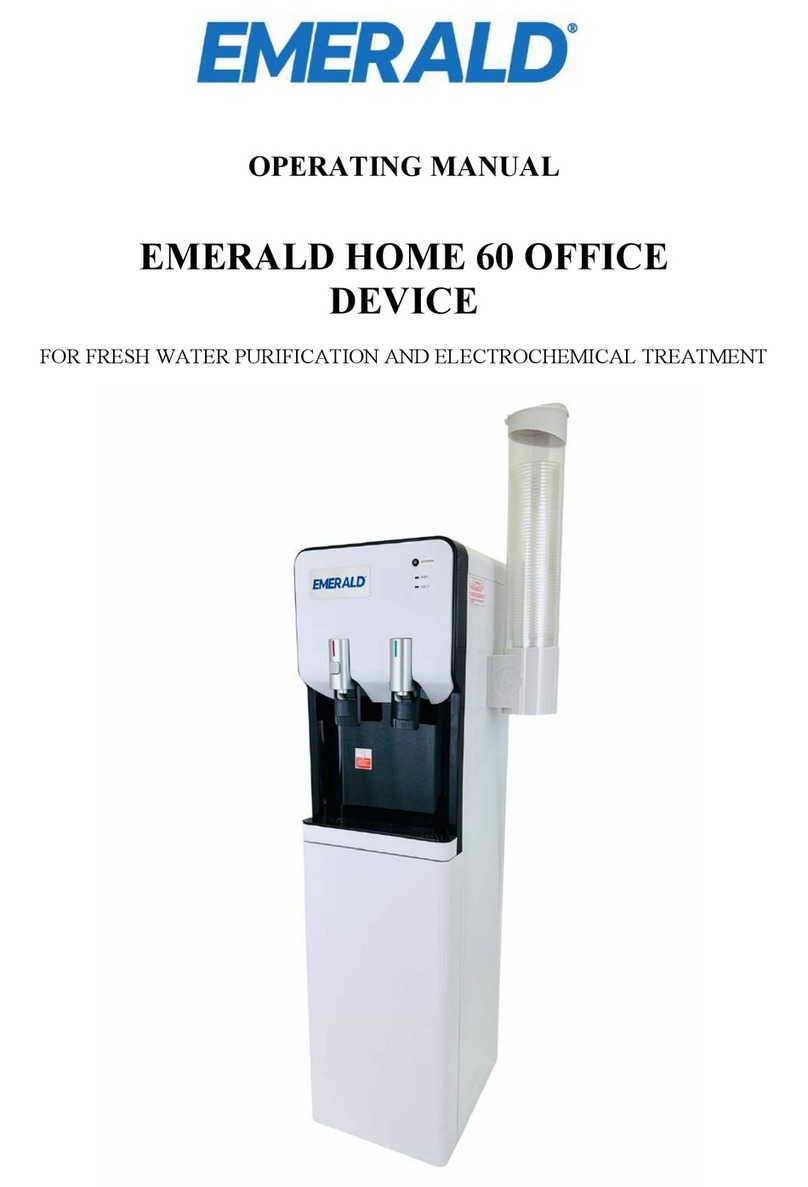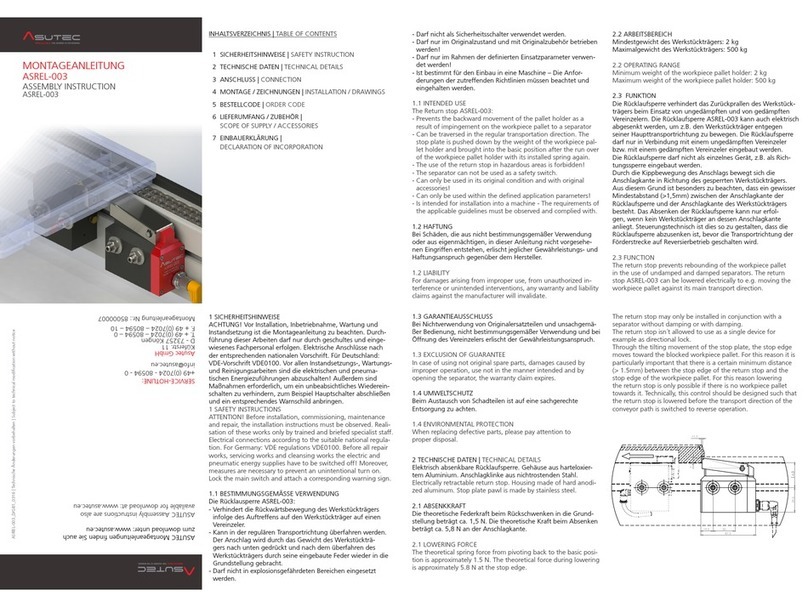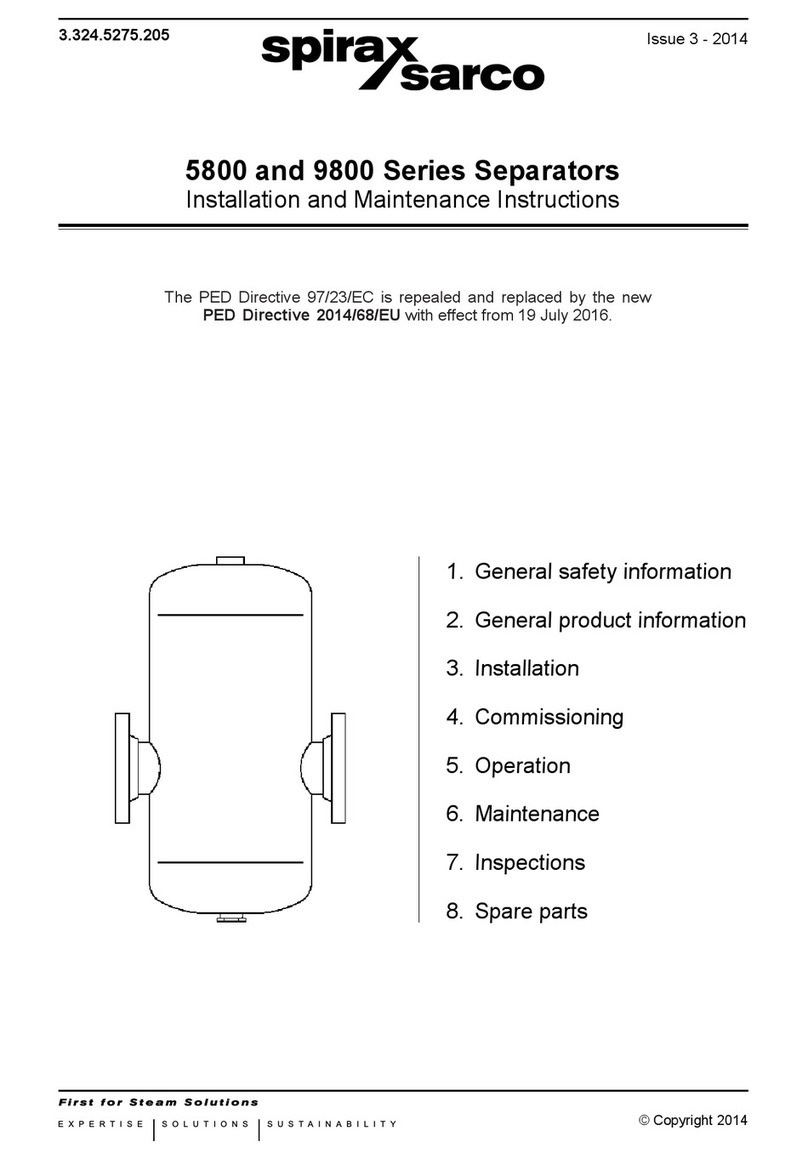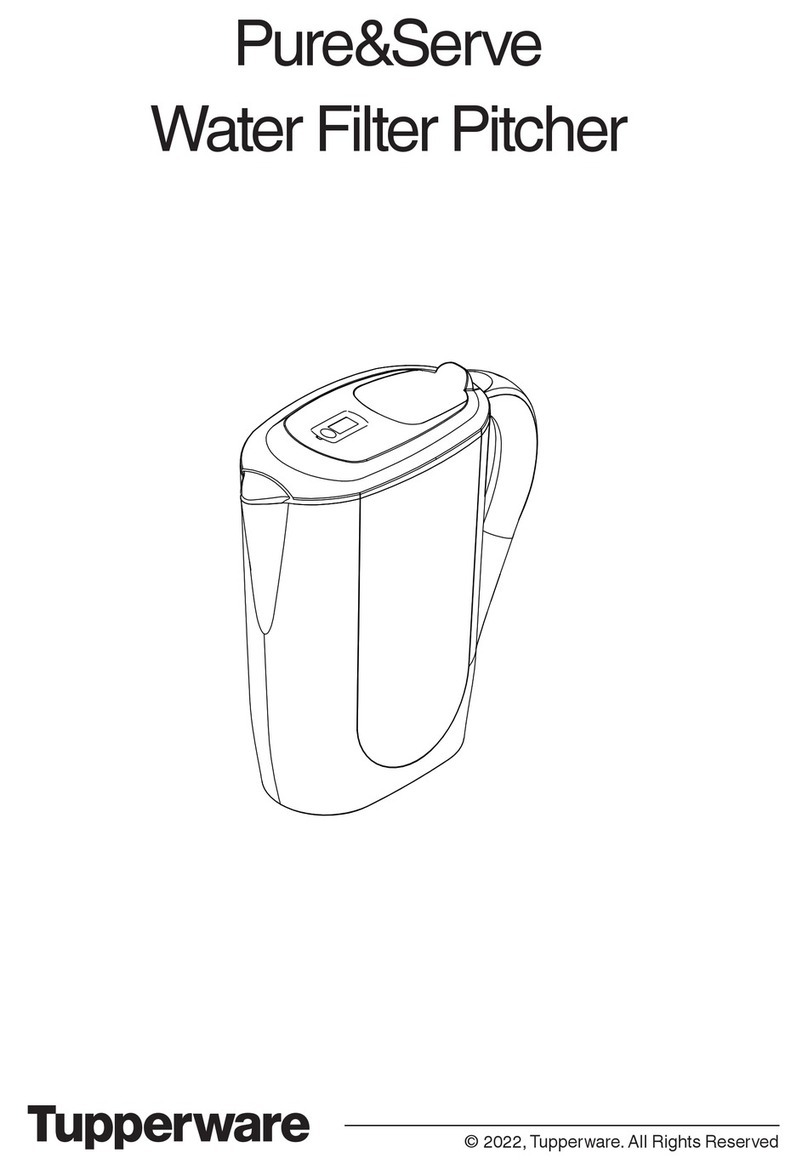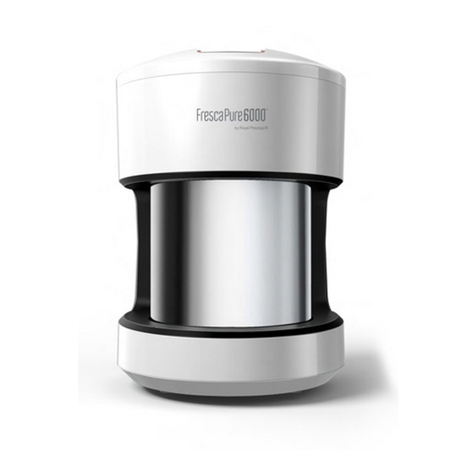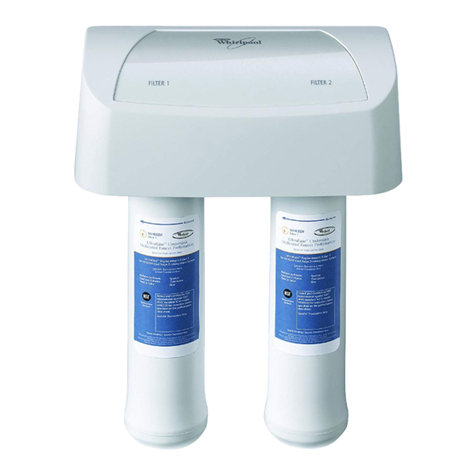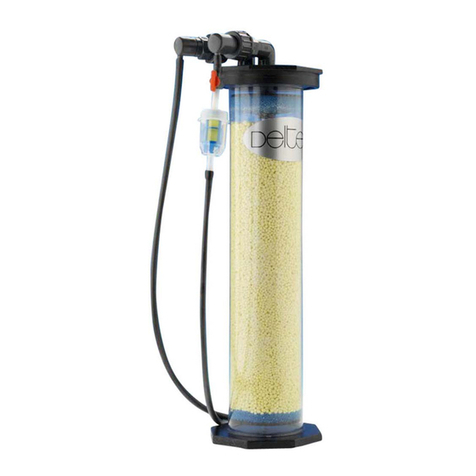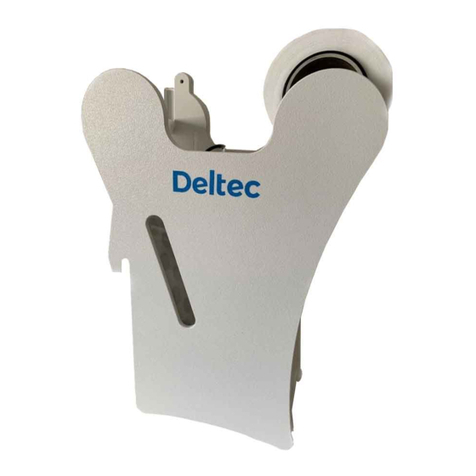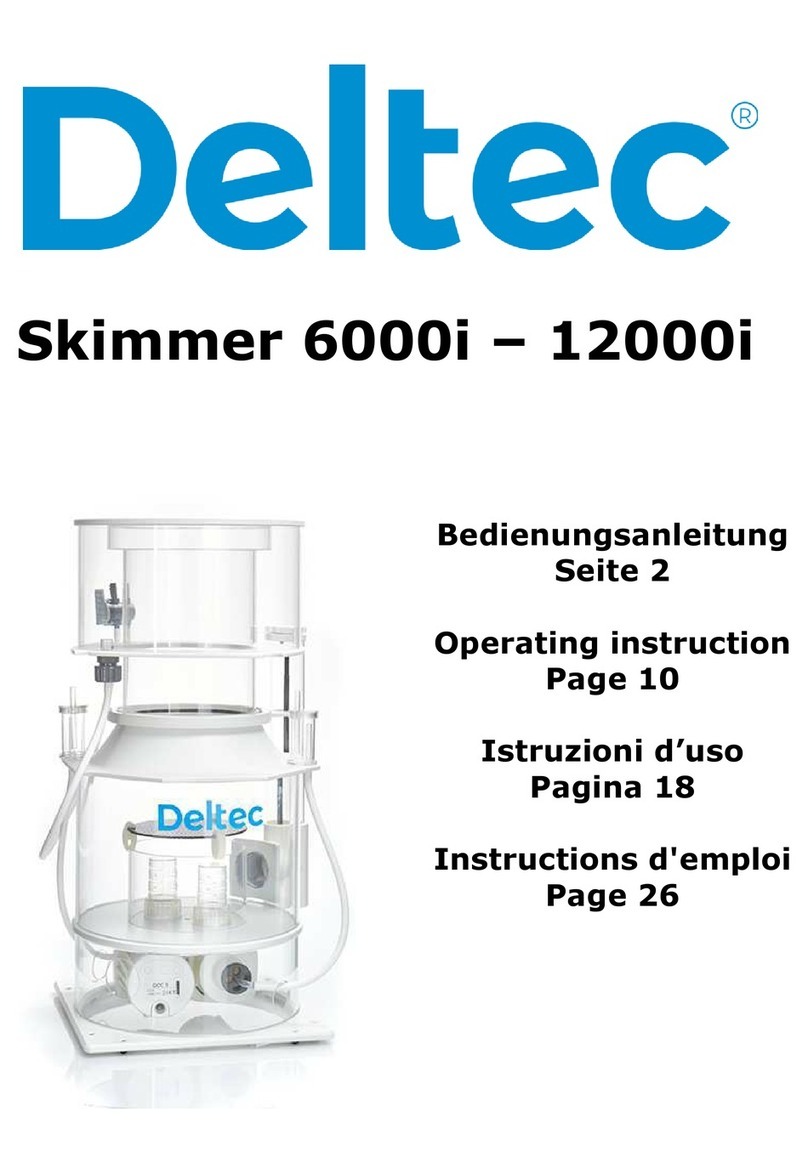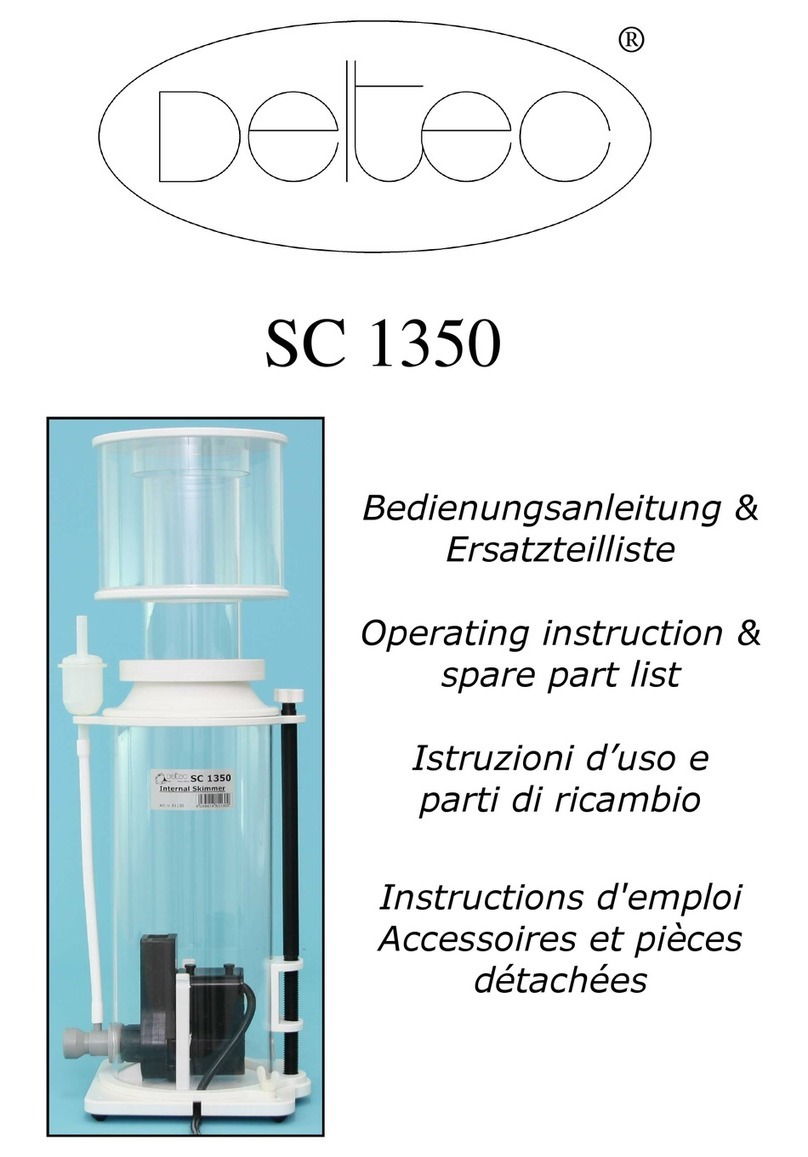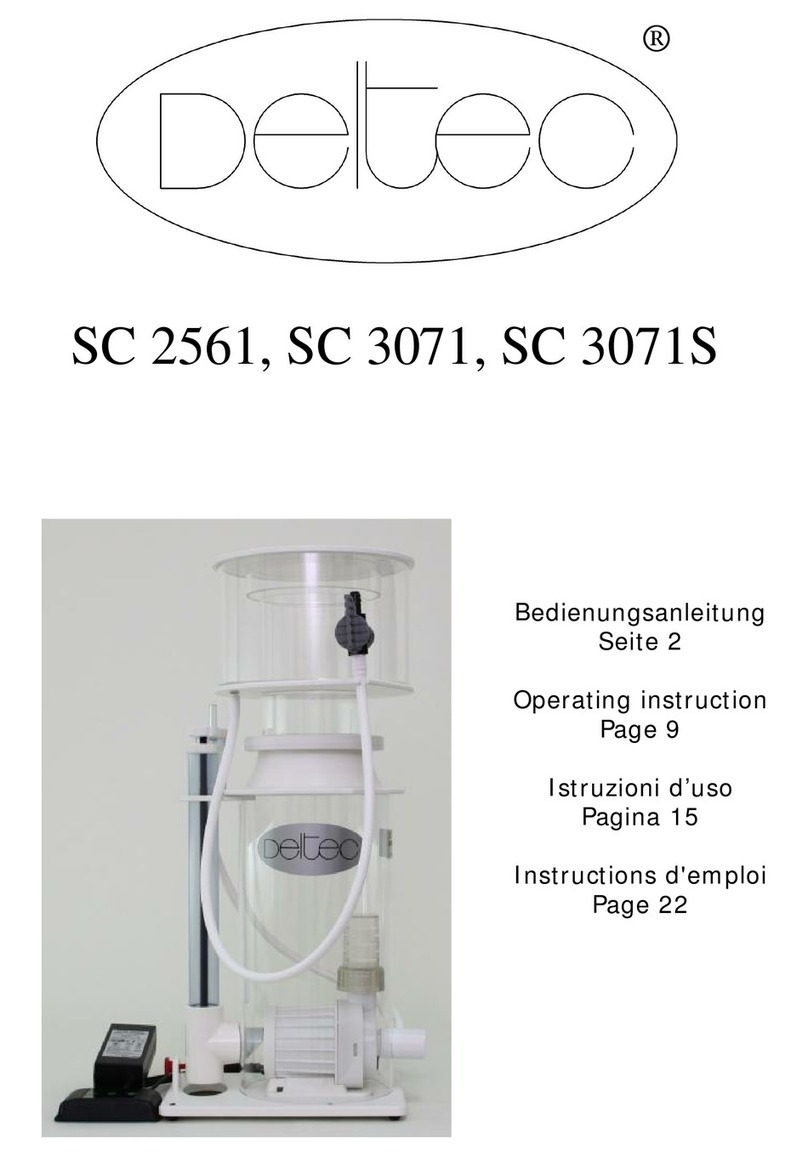IT
NORME DI SICUREZZA
AVVERTENZA: Per evitare incidenti si raccomanda di osservare le norme generali di sicurezza, tra cui le seguenti:
1) LEGGERE E SEGUIRE SCRUPOLOSAMENTE TUTTE LE NORME DI SICUREZZA.
2) PERICOLO – Considerato che l’uso di attrezzature per acquario avviene in presenza di acqua, agire sempre con
particolare cautela per evitare scosse elettriche. Per ognuna delle seguenti situazioni possibili, si raccomanda di
non tentare di eseguire da sé eventuali riparazioni, ma di portare l’apparecchio presso un centro assistenza
autorizzato o provvedere alla sua rottamazione.
a. (Solo per apparecchiature che non prevedono l’uso in immersione). Se l’apparecchio cade nell’acqua, NON
tentare di recuperarlo! Per prima cosa scollegare l’alimentazione elettrica, quindi procedere al recupero. Se i
componenti elettrici dell’apparecchio si bagnano, scollegare immediatamente l’alimentazione.
b. (Solo per apparecchi ad immersione). Se l’apparecchio mostra perdite d’acqua anormali, scollegarlo
immediatamente dall’alimentazione.
c. Dopo avere installato l’apparecchio, eseguire un controllo accurato. Non collegare l’apparecchio all’alimentazione
nel caso si osservi la presenza di acqua in parti non destinate ad essere bagnate.
d. Non mettere in funzione l’apparecchio se il cavo d’alimentazione o la spina appaiono danneggiati, se
l’apparecchio è malfunzionante, se è caduto o ha subito un qualsiasi danno.
e. Per evitare il gocciolamento dell’acqua sulla presa o sulla spina, posizionare l’acquario e il mobile di fianco alla
presa montata a parete in modo che questa resti visibile.
Si raccomanda di fare eseguire al cavo una curva “anti-gocciolamento” come mostrato nella figura sottostante.
Eseguire l’operazione per tutti i componenti elettrici dell’acquario. In questo modo una parte di cavo si trova
sotto il livello della presa, o della spina di collegamento nel caso si usi una prolunga, impedendo così che l’acqua
gocciolando lungo il cavo venga a contatto con la presa.
Se la presa o la spina si bagna, NON disinserire il cavo, ma scollegare l’interruttore generale che porta corrente
all’apparecchio. Quindi scollegare la spina e verificare la presenza di acqua all’interno della presa.
3) Se l’apparecchio viene utilizzato da o in presenza di bambini, è necessaria un’attenta supervisione da parte degli
adulti.
4) Scollegare sempre il cavo d’alimentazione quando l’apparecchio è inutilizzato, prima di aggiungere o prelevare
delle parti e prima di effettuare la pulizia. Per scollegare il cavo d’alimentazione, afferrare bene la spina ed estrarla
dalla presa senza tirare mai direttamente il cavo.
5) Non utilizzare l’apparecchio per usi diversi da quelli a cui è destinato. L’uso di accessori non raccomandati o non
venduti dal produttore dell’apparecchio possono essere causa di condizioni di funzionamento non sicure.
6) Assicurarsi che gli apparecchi montati sull’acquario siano correttamente installati prima di avviarli.
7) Leggere ed osservare tutte le informazioni importanti sull’apparecchio.
8) Se è necessario l’uso di una prolunga, assicurarsi che il cavo sia adatto al voltaggio utilizzato. Se il cavo è messo a
punto per meno ampere or watt rispetto all’apparecchio, potrebbe surriscaldarsi. Fare attenzione che il cavo non
sia troppo teso o schiacciato.
9) (Solo per UK) Questo apparecchio è dotato di spina polarizzata (uno spinotto è più largo dell’altro). Come misura di
sicurezza, tale spina potrà essere inserita in un solo modo in una presa polarizzata. Se la spina non è adatta,
rivolgersi ad un elettricista qualificato. Non utilizzare una prolunga se la spina non si inserisce completamente. Non
tentare di eludere questa condizione di sicurezza.
Eccezione: Questa avvertenza può essere omessa se l’apparecchio non è dotato di spina polarizzata.
In caso di manomissione della spina decade ogni garanzia!
“CONSERVATE LE PRESENTI ISTRUZIONI”




















